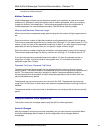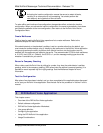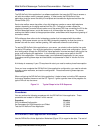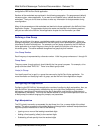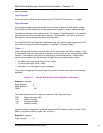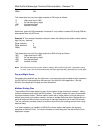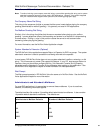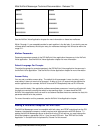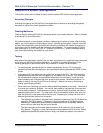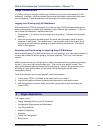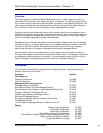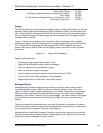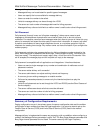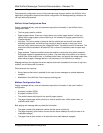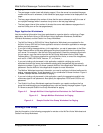
Mitel NuPoint Messenger Technical Documentation - Release 7.0
Using the DID NuPoint Voice Application
This section covers the final steps to take in order to use the DID NuPoint Voice application.
Activating Changes
Activating changes for the DID NuPoint Voice application is identical to activating changes as
discussed in the NuPoint Voice Application chapter.
Creating Mailboxes
The final step for making DID NuPoint Voice operational is to create mailboxes. Refer to Chapter
6, Mailboxes, for more information.
If the administrator’s or the attendant’s mailbox is desired and is set to a number other than the
default, you must create the mailbox before using it. Identifying the mailbox numbers in the DID
NuPoint Voice application gives the mailboxes the ability to perform their special functions, but
the functions are not enabled until the mailboxes are configured. The recommended FCOS for
both mailboxes is 10 (VIP), the LCOS is 1 (Default), the GCOS is 1, and the message waiting
type should be whatever is available for your server.
Testing
After phone lines have been installed, and you have completed all the applicable steps discussed
so far, test your DID NuPoint Voice application. In addition to the testing tips listed in the
following paragraphs, see the task list for the procedure in Volume 2 of this manual.
• For test purposes, standard single line telephones perfectly mimic a CO; a rotary dial
telephone mimics dial pulse signaling, and a pushbutton phone generates the DTMF of tone
trunks.
• Unplugging a CO line makes the line neither idle nor busy to the CO. The CO’s automatic
testing eventually discovers the unplugged line, and takes it out of service. You must then
call the telephone company and have them reactivate the line manually, unless the local
phone company has configured the trunk group for auto-restore. Whenever possible, it is
better to make a line busy to the CO than to unplug it. Make a line busy by reversing its
polarity (grounding the M lead).
• Once the server is working, use caution when substituting telephone line cords. Two kinds of
line cords are commonly available. You can tell them apart by the positions of the two tabs
on their end connectors. The standard cord (that is, the most readily available) has tabs on
opposite sides of the line cord. The other type, which is sometimes called a data cord, has
tabs that are both on the same side of the line cord. Replacing an existing line cord with a
different type can take the port out of service.
– The standard cord (tabs on opposite sides) reverses the positions of the E & M leads, but
maintains Tip & Ring polarity. Plugging in a cord that switches E & M lead positions
between the Tellabs cards and the NuPoint Messenger server immediately takes the
server off-hook, and holds the port out of service.
– The data cord (tabs on the same side) maintains E & M continuity, but reverses Tip &
Ring polarity. Plugging in a cord that reverses polarity between the CO and the Tellabs
equipment automatically makes the trunk busy, and effectively takes it out of service.
©
Copyright 2002, Mitel Networks Corporation 35



